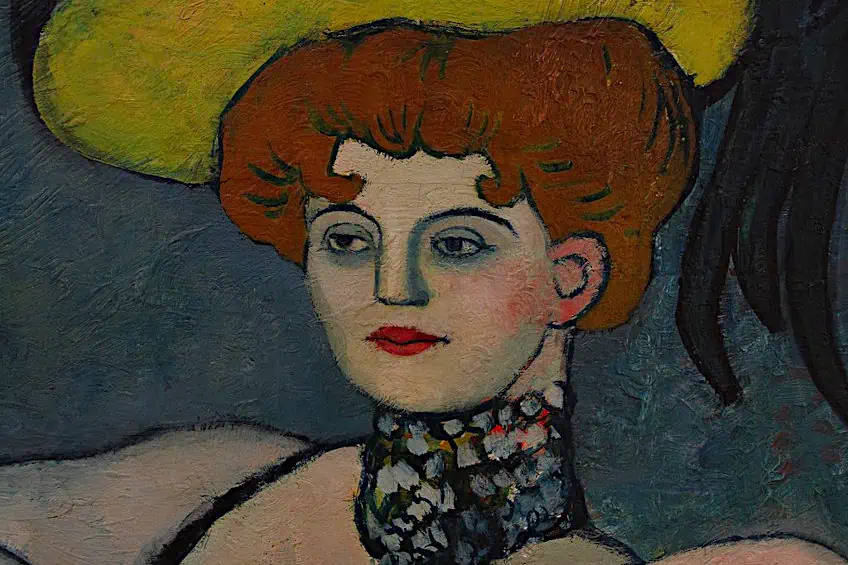Picasso’s Early Work – First Signs of Artistic Genius
In this article, we will share 10 of Picasso’s early paintings. This artist is famous for starting the Cubist movement, but also made art in multiple mediums and styles throughout his life. We will look at Picasso as a child, list Picasso’s early paintings, as well as look at a few early Picasso drawings. In the discussion of each artwork, we will provide a brief visual analysis, and share how the work was received when first exhibited. Picasso’s early work will be discussed chronologically in this article.
Contents
- 1 Artist Abstract: Pablo Picasso?
- 2 Picasso’s Early Work
- 2.1 Le Petit Picador Jaune (1889): Picasso Early Paintings
- 2.2 Bullfight (1892): Early Picasso Drawings
- 2.3 First Communion (1896): Picasso Early Paintings
- 2.4 Science and Neighborly Love (1897): Picasso Early Paintings
- 2.5 Self-Portrait (1899): Early Picasso Drawings
- 2.6 The Divan (1899): Early Picasso Art
- 2.7 Two Acrobats (Harlequin and his Companion) (1901): Early Picasso Work
- 2.8 The Blue Room (1901): Picasso Early Paintings
- 2.9 Self-Portrait with Coat (1901 – 1902): Early Picasso Work
- 2.10 La Vie (1903): Early Picasso Works
- 3 Frequently Asked Questions
Artist Abstract: Pablo Picasso?
Pablo Ruiz y Picasso, commonly known as Pablo Picasso, was a Spanish multi-media artist who is considered one of the most significant artists of the 20th century. He was born in Malaga, Spain in 1881 and began studying art at a young age. In 1895, he moved to Madrid to study at the Real Academia de Bellas Artes de San Fernando. In 1904, Picasso moved to Paris and quickly became a leading figure in the avant-garde art scene. He co-founded the Cubist movement, which revolutionized the way art was made and understood. He went through several artistic periods throughout his life, with the most famous being the Blue Period, the Rose Period, and the Cubist period. His most famous works include Les Demoiselles d’Avignon (1907) and Guernica (1937).
Pablo Picasso’s French immigration identity document listing his occupation as “painter”; Jean-Pierre Dalbéra, CC BY 2.0, via Wikimedia Commons
Picasso is known for his versatility, his ability to work in diverse styles and mediums, and his exceptional creative and stylistic inventiveness. He had a long and prolific career, continuing to work and produce art until his death in 1973 in Mougins, France. He is considered one of the most important figures in the history of art, and his works are widely studied and admired today.
Picasso as a Child
Pablo Picasso had a passion for art from a very young age. Picasso showed a natural aptitude for illustration and painting in his youth. At the age of 7, Picasso’s father, an art teacher, recognized his son’s potential and began to teach him the basics of art. Picasso quickly surpassed his father’s abilities and began creating his own works of art. By the age of 11, Picasso had already completed his first painting, which was a portrait of his sister, Lola.
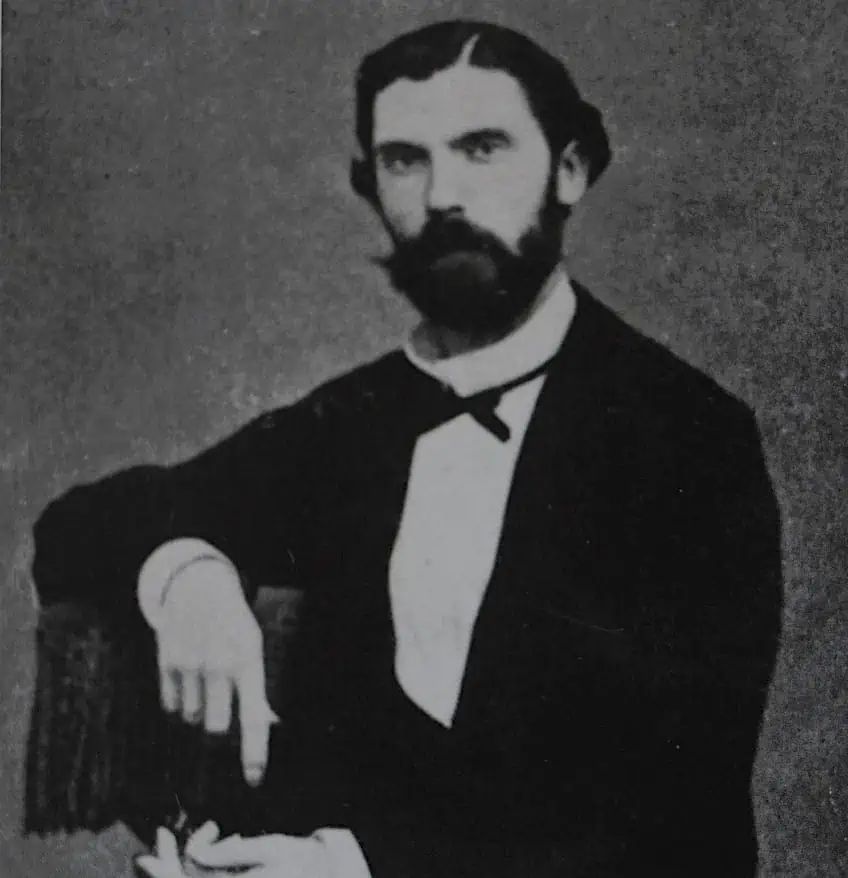
Picasso’s childhood was filled with art and creativity. He spent most of his time drawing and painting and was considered a prodigy by those around him. He was also known for his ability to draw from memory and could recreate any object or scene with great accuracy.
In 1895, at the age of 14, Picasso moved to Madrid to study at the Real Academia de Bellas Artes de San Fernando. It was there that he distilled his artistic talents and invented his own style. He was also introduced to the works of great masters, which had a profound impact on his artistic development. Despite his young age, Picasso’s talent and passion for art were undeniable. He was already on his way to becoming one of the greatest artists of all time, and his childhood was a crucial part of his journey. The artistic foundation he built during his childhood was a key factor in the development of his skills, style, and vision, which would later make him a legend in the art world.
Picasso’s Early Work
Pablo Picasso’s early art is characterized by a realist style, heavily influenced by traditional academic training and the works of the old masters. During his youth and adolescence, Picasso was heavily influenced by the art of Velazquez, Goya, and El Greco.
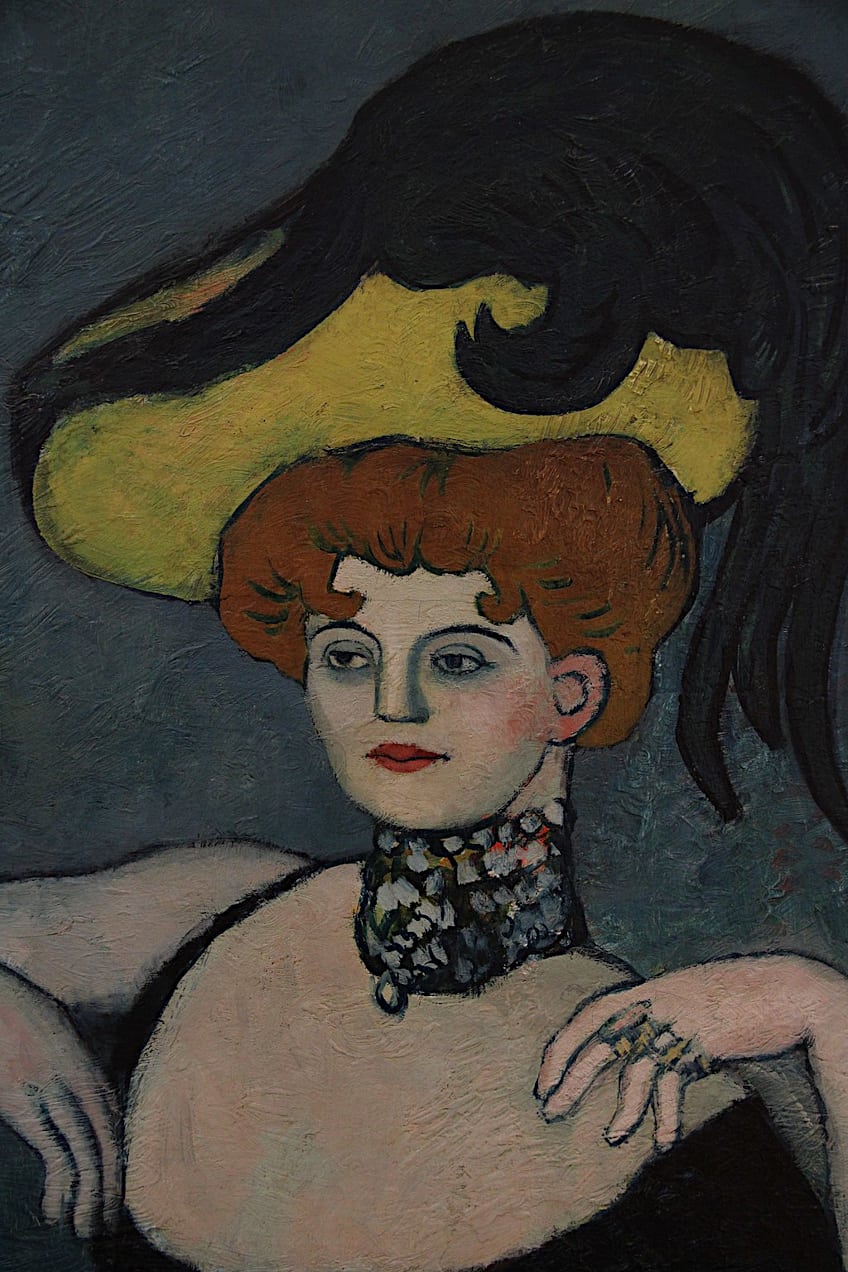
Picasso was also influenced by the naturalistic and realistic style of French artists such as Ingres and Degas. He used to create portraits, landscapes, and still lifes, experimenting with different techniques and materials. His early artworks were quite traditional and conventional, but they already showed his skillful technique and his ability to capture the likeness of his subjects.
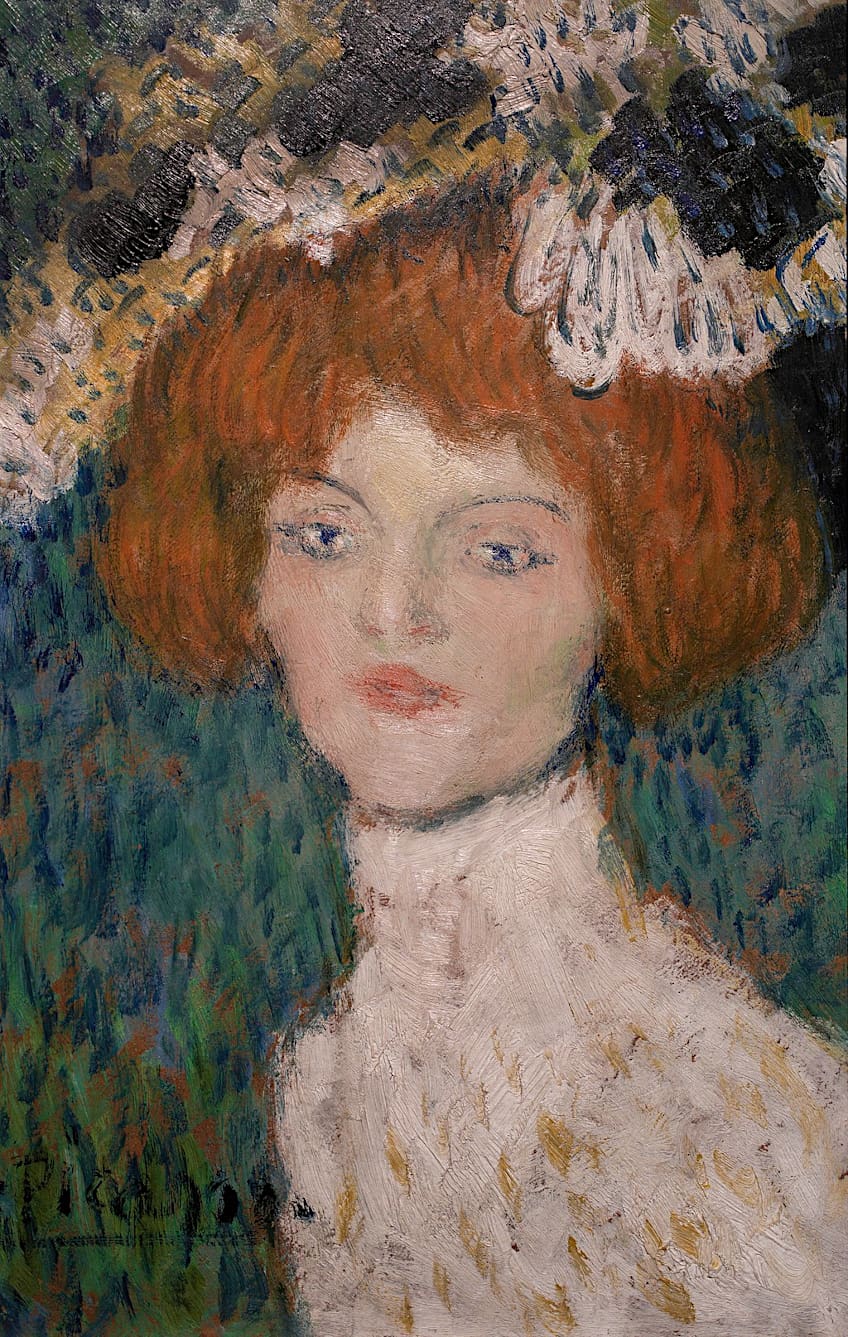
Over time, Picasso’s style began to evolve and he started to experiment with new forms and techniques, leading to the development of his own unique style.
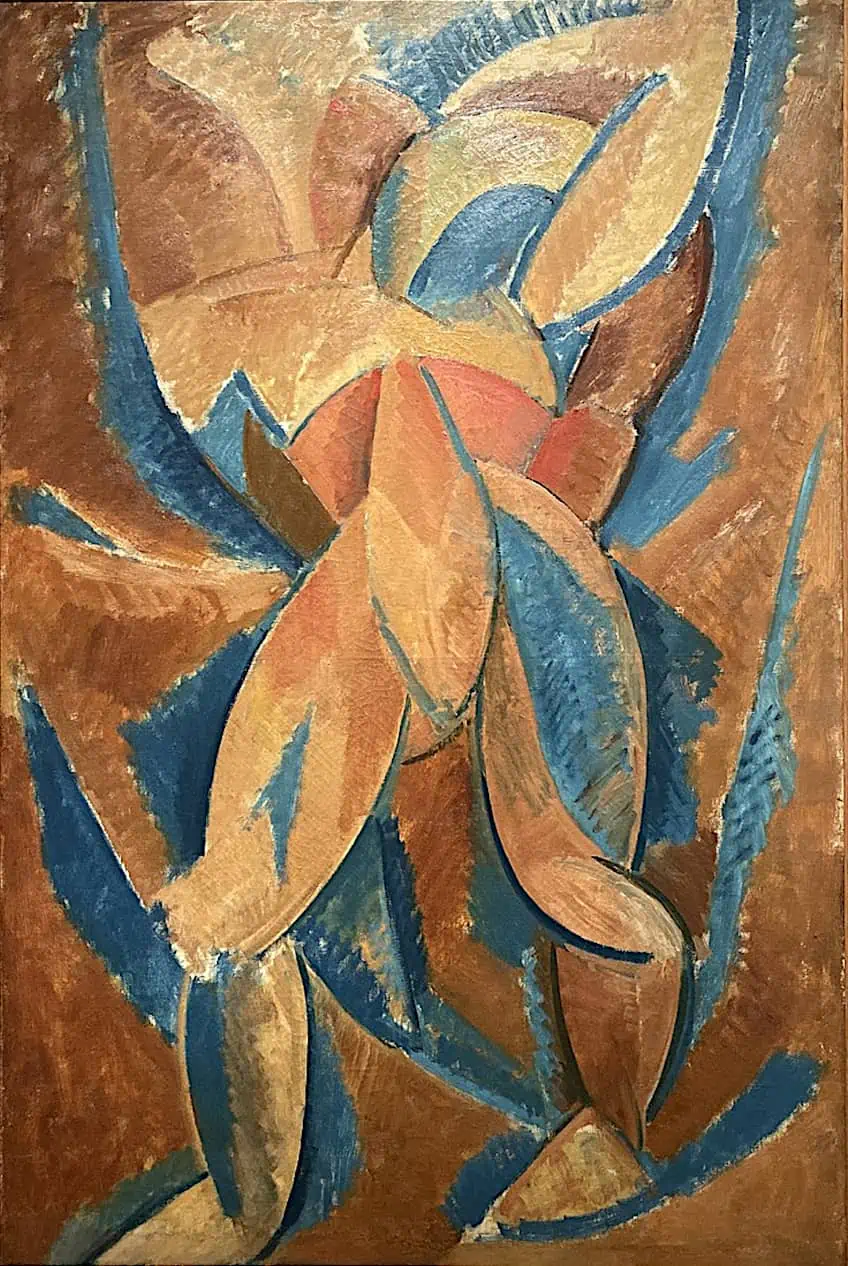
Le Petit Picador Jaune (1889): Picasso Early Paintings
| Date Painted | 1889 |
| Medium | Oil on wood |
| Dimensions (cm) | 24 x 19 |
| Location | Private Collection of Claude Picasso, Paris, France |
Compositional Overview of Le Petit Picador Jaune
Le Petit Picador Jaune (The Little Yellow Picador) is an early childhood painting by Pablo Picasso. The artwork illustrates a moment from a bullfight, featuring a diminutive representation of a picador – a bullfighter who employs a spear – at the center of the composition.
The picador is portrayed in profile, attired in a yellow suit and a red hat. He is gripping a spear in his right hand and is leaning forward as if ready to confront the bull.
In the background, a massive, ominous bull is seen charging toward him, its head lowered and its horns pointed forward. The background of the painting is relatively plain, with a blue sky and a few wispy clouds.
Reception of Le Petit Picador Jaune
When Le Petit Picador Jaune was initially presented, it received a mixed reaction from both art critics and the general public. Some viewers were impressed by Picasso’s use of bold hues and his ability to convey the intensity of the bullfighting scene, while others found the painting to be too chaotic and difficult to understand. Art critics also have mixed opinions about the painting. Some have praised the work for its dynamic brushstrokes and movement, others criticized it for its lack of structure and the seemingly disordered arrangement of shapes.
Critic John Berger (1926 – 2017) wrote that the painting was “a jumble of poorly drawn figures” and that it failed to possess the harmony and sophistication of Picasso’s previous works. On the other hand, critic Robert Hughes (1938 – 2012) wrote that the painting was a “tour de force” and that it showcased Picasso at his artistic peak (at the ripe old age of 8).
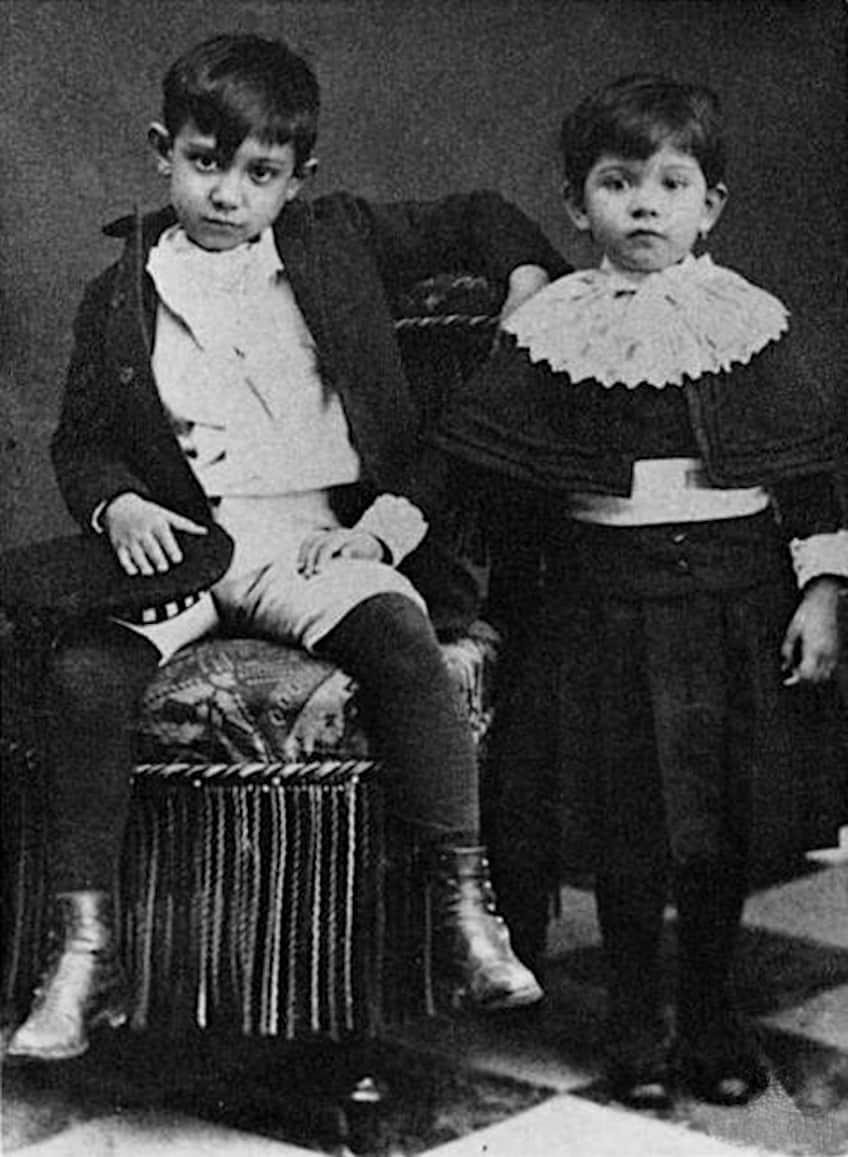
A Short Analysis of Le Petit Picador Jaune
The composition of Le Petit Picador Jaune is dynamic and chaotic, with the picador and bull figures arranged in a diagonal line across the canvas. The painting depicts a bullfight, a traditional Spanish spectacle that combines elements of the sport, theater, and ritual. The painting captures the tension and drama of the bullfight, as the picador prepares to face the charging bull. Additionally, the painting also illustrates the violence and cruelty of the bullfight, as the picador and the bull are locked in a deadly struggle.
In terms of color, Picasso uses a bold and vibrant palette in the painting. The picador is depicted in a bright yellow suit, which contrasts sharply with the deep red of the background. The use of color in the painting is striking and dynamic and helps to create a sense of movement and excitement.
The texture of the painting is relatively rough, with the figures and the background depicted in a series of broad brushstrokes. Picasso uses a combination of short, choppy strokes and longer, more fluid ones to create a sense of texture and depth. The brushwork is expressive and gestural and gives the painting a sense of immediacy and vitality. In terms of perspective and form, Picasso uses a flattened, abstract style in Le Petit Picador Jaune. The figures of the picador and spectators are simplified and reduced to their essential forms. This early Picasso work starts to hint at the artist’s Cubist style, which he would develop in later years.
Bullfight (1892): Early Picasso Drawings
| Date Painted | 1892 |
| Medium | Pencil on paper |
| Dimensions (cm) | N/A |
| Location | Museu Picasso, Barcelona, Spain |
Compositional Overview of Bullfight
In this early Picasso drawing, the artist sketched a bullfight with three matadors in the arena with one bull. The man closest to the bull seems to be flying through the air as if the bull has just knocked him over. There is a crowd watching the bullfight and, in the sky, a row of six pigeons is sketched upside down.
Reception of Bullfight
There is not much information about this sketch and when it was first exhibited. It is likely that the sketch only became interesting to collectors after Picasso’s death as it shows many favorite symbols at such an early stage. This early Picasso drawing is now part of the Museu Picasso’s collection in Barcelona.
A Short Analysis of Bullfight
As mentioned above, this sketch is particularly special as it shows two of Picasso’s recurring themes which he continued to work with throughout his career: the bullfight and pigeons. The crowd around the bullfight is drawn in abstracted squiggles with only a few figures definable. This is also a clue to Picasso’s later experiments with abstraction and distortion through Cubism.
The way Picasso chose to draw the pigeons is also interesting, as they are more formal studies, but done upside down as if the artist sketched the two parts of the composition at different times.
First Communion (1896): Picasso Early Paintings
| Date Painted | 1896 |
| Medium | Oil on canvas |
| Dimensions (cm) | 166 x 118 |
| Location | Museu Picasso, Barcelona, Spain |
Compositional Overview of First Communion
Pablo Picasso’s First Communion is a painting that showcases the artist’s early skills and style. The painting depicts a young girl dressed in white, surrounded by family members, as she receives her first communion.
The composition of the painting is quite complex. The girl is placed in the center of the painting, surrounded by her family members, who are arranged in a diagonal line, with their gazes directed toward her. This arrangement creates a sense of movement and dynamism within the painting, drawing the viewer’s gaze toward the focal point of the girl.
Reception of Science and First Communion
First Communion was met with a divided response upon its initial unveiling. The artwork was first showcased at the “Salon de la Sociedad de Artistas Catalanes” in Barcelona, in 1896, where it received both positive and negative feedback from both critics and the public. While some praised it for its technical proficiency and emotional depth, others criticized it for being too conventional in its subject matter and style. The painting depicts a young girl in a white dress surrounded by her family members as she receives her first communion, which was a common theme for artists of the late 19th century.
Despite the mixed reception, First Communion was widely acknowledged as an accomplished work for a teenager and marked the start of Picasso’s career as an artist. The painting was later acquired by a private collector, and it is now considered a valuable piece of art from his early years.
It’s worth mentioning that this painting did not have a wide reach, as it was not part of any major exhibition or traveling show, and it was not widely reproduced in books or catalogs. However, Picasso himself considered it to be one of his most important early works, and it reflects his early interest in religious themes and family life.

A Short Analysis of First Communion
The use of color in the painting is also noteworthy. The girl’s white dress stands out against the dark background, creating a stark contrast that highlights her centrality to the scene. The colors used for the other figures are muted, with a palette of earth tones, which creates a sense of harmony and balance in the painting.
The brushstrokes are thick and visible, giving the painting a sense of texture and movement. The figures are rendered with a high degree of realism, with attention to detail in the facial expressions and body language. This realism gives the painting an emotional depth that is exceptional.
Science and Neighborly Love (1897): Picasso Early Paintings
| Date Painted | 1897 |
| Medium | Oil on canvas |
| Dimensions (cm) | 197 x 249.5 |
| Location | Museu Picasso, Barcelona, Spain |
Compositional Overview of Science and Neighborly Love
In this large scale Picasso early work, alternatively titled Science and Charity, we can see a sick person resting in bed. There is a doctor sitting next to them on the left, reading their pulse with a watch. A woman dressed like a nun is handing the patient a cup on top of a plate while holding a child on her hip. The room is simple with few extra details except for the traditional Spanish artwork hanging above the bed.
Reception of Science and Neighborly Love
Science and Neighborly Love was one of the first major works by Pablo Picasso, and it was met with mixed reviews upon its debut. It was created when Picasso was just 16 years old. The painting was first exhibited at the Salon de la Sociedad de Artistas Catalanes in 1897, in Barcelona, where it was met with both praise and criticism.
Some critics praised the painting for its technical skill and emotional depth, while others criticized it for its lack of originality and for being too traditional in its subject matter and style.
Despite the mixed reception, Science and Neighborly Love was widely recognized as an impressive work for a teenager and it marked an important phase in Picasso’s early development as an artist. The painting was later acquired by the Picasso Museum in Barcelona, where it remains on display today. This painting is widely considered the first major work by Picasso, and an early example of his realistic style, which he would later develop into the Blue and Rose periods. The work also reveals his early interest in Picasso in the representation of charity and social issues, which he would revisit later in his career.

A Short Analysis of Science and Neighborly Love
Pablo Picasso’s Science and Charity is a striking painting that showcases the artist’s impressive technical skill and emotional depth at a very young age. The painting depicts a doctor and a nun tending to a sick child, set against a plain background. The composition of the painting is simple but effective, with the figures arranged in an upside-down triangular formation, with the child at the apex and the doctor and nun at the base. The triangular composition helps to create a sense of harmony and stability within the scene.
The use of color in the painting is also noteworthy. The figures are rendered in muted tones of brown and gray, with the exception of the red in the blanket on the bed. The dull colors reflect the seriousness of the scene, a charity act, and the simplicity of the life of the people at that time.
The brushstrokes are thick and visible, giving the painting a sense of texture and movement. The figures are rendered with a high degree of realism, with attention to detail in the facial expressions and body language. This realism gives the painting an emotional depth that is striking.
Self-Portrait (1899): Early Picasso Drawings
| Date Painted | 1899 |
| Medium | India ink and gouache on paper |
| Dimensions (cm) | 22 x 16 |
| Location | Museu Picasso, Barcelona, Spain |
Compositional Overview of Self-Portrait
In this emotional self-portrait, Picasso sketched himself as a young man. He is looking directly at the viewer with a confrontational stare, his chin slightly tucked. Besides his portrait, from the shoulders up, not much more has been drawn. The background is a mess of sketchy lines.
Reception of Self-Portrait
Self-Portrait by Pablo Picasso is one of his earliest known self-portraits, and it is not clear how it was received when it was first exhibited. The painting was created in 1899 when Picasso was only 18 years old, and it is likely that it was exhibited in one of the Salons in Barcelona, where the artist was based at that time. However, there is limited information available about its debut and the reception it received.
A Short Analysis of Self-Portrait
During this period of his career, Picasso was still experimenting with different styles and themes, and his works were not yet widely recognized or appreciated by the public or critics. He was still in his academic phase, and “Self-Portrait” is considered as one of the works that reflect his early interest in portraiture and his experimentation with the traditional techniques of painting.
It’s also worth mentioning that this painting is not as well-known as some of Picasso’s other works, as it was not widely reproduced or exhibited in major shows. However, it is considered an important piece of art from his early years and it reflects his experimentation with different styles, themes, and techniques. Additionally, it provides a glimpse into the mind of the young artist and his sense of self-awareness.
The Divan (1899): Early Picasso Art
| Date Painted | 1899 |
| Medium | Pastel on paper |
| Dimensions (cm) | 26.2 x 29.7 |
| Location | Museu Picasso, Barcelona, Spain |
Compositional Overview of The Divan
In “The Divan” (1899), a painting by Pablo Picasso, the viewer can see a scene of a man and a woman sitting on a couch. The man, dressed in a suit, sits at the end of the couch with his arm around the woman, who is dressed in a long, flowing dress. The couple appears to be deep in conversation, and the man’s gaze is directed toward the woman. The painting is done in a realistic style and features earthy tones. The background is mostly blurred and indistinct.
This painting is one of Picasso’s early works and showcases his skill as a traditional painter.
Reception of The Divan
This is an informal sketch and an example of early Picasso art, but as with most of the art listed in this article, this sketch did not receive much attention when Picasso made it or when he was alive. It has mostly been reproduced and printed in books, catalogs, and merchandise of the artist’s work after his death. It is, however, seen as one of the good examples of the style transition Picasso underwent when he moved to Paris – the artist Toulouse-Lautrec’s influence is specifically visible in this early Picasso art piece.
A Short Analysis of The Divan
The Divan by Pablo Picasso is a painting that features a man and a woman sitting on a couch in an intimate setting. The composition of the painting is balanced, with the couple taking up the majority of the space in the center of the canvas. The couch and the background are rendered in a loose, impressionistic style, while the figures are more realistically detailed.
The man is dressed in a suit, and the woman is dressed in a long, flowing dress, adding to the sense of formality in the scene. The man’s arm is around the woman, and they appear to be deep in conversation or leaning in for a kiss, with the man’s gaze directed toward the woman. The color palette used in the painting is mostly earth tones, such as browns, greens, and yellows, which gives the painting a warm and inviting feeling. The background is mostly blurred and indistinct, which draws the viewer’s attention to the focal point of the painting, the couple on the couch.
Overall, the painting showcases Picasso’s skill as a traditional painter and his ability to create a sense of intimacy and emotion through the use of composition, color, and brushstrokes. As one of his early works, it is a good example of the development of his artistic career.
Two Acrobats (Harlequin and his Companion) (1901): Early Picasso Work
| Date Painted | 1901 |
| Medium | Oil on canvas |
| Dimensions (cm) | 73 x 60 |
| Location | State Pushkin Museum of Visual Arts, Moscow, Russia |
Compositional Overview of Harlequin and his Companion
Harlequin and his Companion by Pablo Picasso is a painting that showcases the artist’s early skills and style. The painting depicts a Harlequin, a traditional commedia dell’arte character, and a woman, both of them are in a seated position.
The composition of the painting is quite balanced, with the figures arranged in a symmetrical formation, creating a sense of harmony and stability within the scene.
The Harlequin is placed on the right side of the woman sitting to her left. The Harlequin’s companion is looking directly at the viewer, but her eyes are shut and unfocused as if she is daydreaming. The Harlequin is looking away, only exposing her profile to the viewer.
Reception of Harlequin and his Companion
It is not clear how Harlequin and his Companion by Pablo Picasso was received when it was first exhibited, as there is limited information available about its debut and the reception it received. The painting was created during the early stages of Picasso’s career, and it is likely that it was exhibited in one of the Parisian Salons of the time, such as the Salon des Indépendants or the Salon d’Automne. However, it is not certain if the painting was exhibited during that period, and if so, how it was received by critics and audiences.
It’s worth mentioning that during this period of his career, Picasso was still experimenting with different styles and themes, and his works were not yet widely recognized or appreciated by the public or critics. He was still in the early stages of his Blue Period, and the painting Harlequin and his Companion is considered one of the works that reflect his interest in popular culture, traditional art forms, and the use of vibrant and contrasting colors.
This painting is not as well-known as some of Picasso’s other works, as it was not widely reproduced or exhibited in major shows. However, it is considered an important piece of art from his early years and it reflects his experimentation with different styles, themes, and techniques.
A Short Analysis of Harlequin and his Companion
The use of color in the painting is also noteworthy. The figures are rendered in a vibrant and contrasting color palette, with the Harlequin’s costume in bold shades of red, yellow, and green, and the woman’s dress in a pale blue. The use of bright colors gives a sense of liveliness and movement to the scene, and it reflects Picasso’s interest in popular culture and traditional art forms.
The contrast of colors also adds depth and dimension to the painting.
The flat areas of color, outlined shapes, and simplified forms are all clues to the way Picasso’s work would develop. He was starting his Blue Period with The Blue Room, which was painted in the same year as Harlequin and his Companion, seen as the start of this artistic phase. The explorations of Picasso’s Blue Period led to his Rose Period and eventually to the development of Cubism.
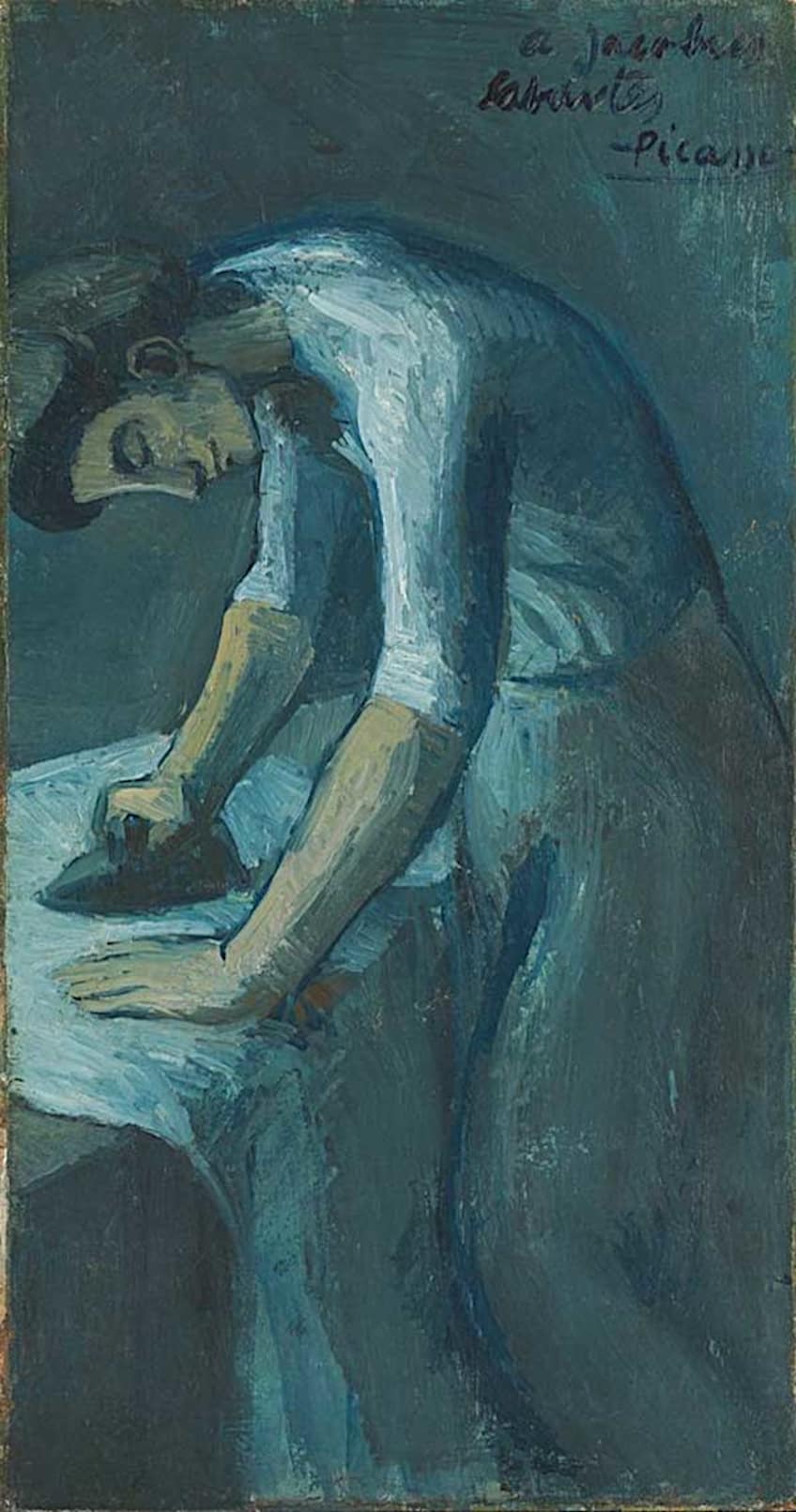
The brushstrokes in this painting are thick and visible, giving the painting a sense of texture and movement. The figures are rendered with a medium degree of realism, with attention to detail in the facial expressions and body language. This distorted realism gives the painting an emotional effect that is memorable.
The Blue Room (1901): Picasso Early Paintings
| Date Painted | 1901 |
| Medium | Oil on canvas |
| Dimensions (cm) | 50.4 x 61.5 |
| Location | The Phillips Collection, Washington, D.C., United States |
Compositional Overview of The Blue Room
In The Blue Room, a nude figure is portrayed bending over a bathtub. The setting is thought to be either the artist’s studio in Paris or his bedroom in the apartment he shared with others at the time. Behind the woman, a poster of May Milton by Toulouse-Lautrec is affixed to the wall, a nod to the artist who had recently passed away at the time the painting was created. Underneath the poster, there is an unmade bed, suggesting that the woman had just risen from there before washing.
Reception of The Blue Room
The Blue Room is regarded as a pioneering piece from Picasso’s Blue Period. In the year 1900, he relocated to Paris and was influenced by the Impressionists and Post-Impressionists. The following year, he presented his work for the first time in a solo exhibition in Paris, exhibiting a painting that depicted the joys of Montmartre at night. The Blue Room was created shortly after this exhibition and is linked to the works in that collection, as well as the other blue paintings that would come after.
At the time, it was considered a striking painting as it unmistakably portrays the morning after a night of pleasure. It was common for artists to paint nude women when they were a representation of a goddess or biblical figure.
A Short Analysis of The Blue Room
In The Blue Room, Picasso creates a sense of tranquility and serenity, even though the woman’s face is not visible. This contrasts his later Blue Period paintings, which often depicted bleak and sorrowful scenes. The use of blue, combined with the vibrant reds and ochres in the rest of the room, and the woman’s comfortable pose, contribute to the sentiment of bliss. It has been suspected since the 1950s that The Blue Room contains a hidden painting beneath its surface. Picasso often scraped off the paint while he worked, revealing the forms underneath, or using previous compositions to add to the final image.
In the early 2000s, infrared reflectography technology was used to study the composition of The Blue Room. It exposed a portrait of a man that Picasso had painted before the start of his Blue Period. The man, wearing a bowtie and touching his cheek, is seated. Researchers confirmed that both paintings were created in the summer of 1901.
Self-Portrait with Coat (1901 – 1902): Early Picasso Work
| Date Painted | 1901 – 1902 |
| Medium | Oil on canvas |
| Dimensions (cm) | 81 x 60 |
| Location | Musée Picasso, Paris, France |
Compositional Overview of Self-Portrait with Coat
Self-portrait with Coat depicts a self-portrait of the artist as a young man, dressed in a long black coat. He is looking directly at the viewer with a serious expression on his face. The background is a simple, monochrome blue tone. The painting is rendered in a realistic style, with naturalistic colors and brushstrokes, although some of Picasso’s figure distortion is starting to show in this painting.
Reception of Self-Portrait with Coat
Picasso’s early works, which include Self-portrait with Coat, was not well-received by critics and the public at the time of their creation. His style was seen as unconventional and difficult to understand, and it took time for the art world to fully appreciate his work. However, it’s important to note that Self-portrait with Coat was painted at the beginning of Picasso’s career when he was still finding his style and experimenting with different techniques and motifs.
In general, Picasso’s early works, including self-portraits, were not widely exhibited or well-known until many years after they were created. It wasn’t until the 1920s and 1930s, with the rise of Surrealism and the increasing acceptance of avant-garde art, that Picasso’s early works began to receive more attention and acclaim.
A Short Analysis of Self-Portrait with Coat
Self-portrait with Coat showcases Picasso’s skillful use of color, brushstrokes, and composition. The brushstrokes are thick and visible, which gives the painting a sense of texture and movement. The use of black and white tones, and the serious expression on the artist’s face, convey a sense of introspection and self-awareness. The artist’s use of color is limited to a few hues, which gives the painting a sense of unity and simplicity.
One of the striking features of the painting is the artist’s use of light and shadow. The light source is unknown but it’s used to create a sense of depth and volume in the figure, through the use of light and shadow.
La Vie (1903): Early Picasso Works
| Date Painted | 1903 |
| Medium | Oil on canvas |
| Dimensions (cm) | 196.5 x 129.2 |
| Location | Cleveland Museum of Art, Cleveland, United States |
Compositional Overview of La Vie
La Vie depicts a naked couple embracing each other on the left side of the composition. The woman is standing with her arms resting on the man’s left shoulder, while the man is gazing at a mother holding her child. The man’s arm is slightly outstretched and his hand is pointing at the mother in a significant gesture. The man and his mother seem to be looking at each other without speaking. The woman embracing the man is looking down and away.
In the center of the picture, behind the figures, two paintings add a deeper meaning to the artwork. The top painting features a woman holding a man who appears to be in grief or pain. On the floor is another painting of a person squatting miserably with multiple previous versions of the composition visible around her on the canvas. All the figures are naked.
Reception of La Vie
La Vie by Pablo Picasso was first displayed in 1903 at the Salon des Indépendants in Paris. The painting, which was created by Picasso at the young age of 22, portrays a group of figures in a dreamlike, surreal setting. It features vivid colors and strong, emotive brushstrokes. It is considered an early work of Picasso and is representative of his Blue Period, known for its extensive use of blue hues in his paintings from that time. The painting was widely appreciated by both critics and the public and helped establish Picasso as a rising talent in the art world.

A Short Analysis of La Vie
The theme of the painting La Vie is mysterious and surreal. The figures are portrayed in a dreamlike setting that appears to be an artist’s studio. The color scheme of the painting is primarily composed of blues and greens, creating a cool and otherworldly atmosphere. Picasso employs bold brushstrokes and sharp contrasts to generate a sense of dimension and movement within the painting. The source of light is not evident, but the figures are evenly lit, generating a feeling of uncertainty and enigma.
Picasso showed a lot of talent from a young age. From this discussion of early Picasso art, it is clear that the artist had significant skill and training, as well as experimented a lot throughout his early years as an artist. All of this work and experimentation in Picasso’s early paintings and early Picasso drawings led to him becoming one of the most recognized artists to this day.
Frequently Asked Questions
What Are the Most Famous Picasso Early Paintings?
Pablo Picasso (1881 – 1973) only started getting recognition for his art when he moved to Paris in the early 20th century. During this time, he was experimenting with a collection of paintings that would become known as his Blue Period. The paintings Blue Room (1901) and La Vie (1903) from this time are some of Picasso’s early paintings that have reached fame.
What Is the Earliest Documented Picasso Artwork?
The earliest documented artwork by Pablo Picasso is a pencil drawing titled Le picador which is a bullfighting scene, created between 1890 and 1892 when he was only between nine and 11 years old. This drawing was made by young Picasso as a part of a series of drawings of bullfighting scenes, which was a subject that fascinated him from a very young age. The drawing is considered an early example of Picasso’s artistic talents and demonstrates his precocious skill and interest in the subject matter. It is a remarkable work for a child of that age, and it is an important piece of art in understanding the development of his artistic vision.
How Did Early Picasso Art Influence the Formation of Cubism?
Picasso’s earlier styles of painting, specifically his Blue and Rose periods, were a significant influence on the formation of Cubism. He began to experiment with abstract forms and multiple viewpoints, the use of bold and contrasting colors, and the fragmentation of forms, which are all elements that would later be key to the development of Cubism.
Nicolene Burger, a South African multimedia artist and creative consultant, specializes in oil painting and performance art. She earned her BA in Visual Arts from Stellenbosch University in 2017. Nicolene’s artistic journey includes exhibitions in South Korea, participation in the 2019 ICA Live Art Workshop, and solo exhibitions. She is currently pursuing a practice-based master’s degree in theater and performance. Nicolene focuses on fostering sustainable creative practices and offers coaching sessions for fellow artists, emphasizing the profound communicative power of art for healing and connection. Nicolene writes blog posts on art history for artfilemagazine with a focus on famous artists and contemporary art.
Learn more about Nicolene Burger and about us.
Cite this Article
Nicolene, Burger, “Picasso’s Early Work – First Signs of Artistic Genius.” artfilemagazine – Your Online Art Source. May 2, 2023. URL: https://artfilemagazine.com/picassos-early-work/
Burger, N. (2023, 2 May). Picasso’s Early Work – First Signs of Artistic Genius. artfilemagazine – Your Online Art Source. https://artfilemagazine.com/picassos-early-work/
Burger, Nicolene. “Picasso’s Early Work – First Signs of Artistic Genius.” artfilemagazine – Your Online Art Source, May 2, 2023. https://artfilemagazine.com/picassos-early-work/.


